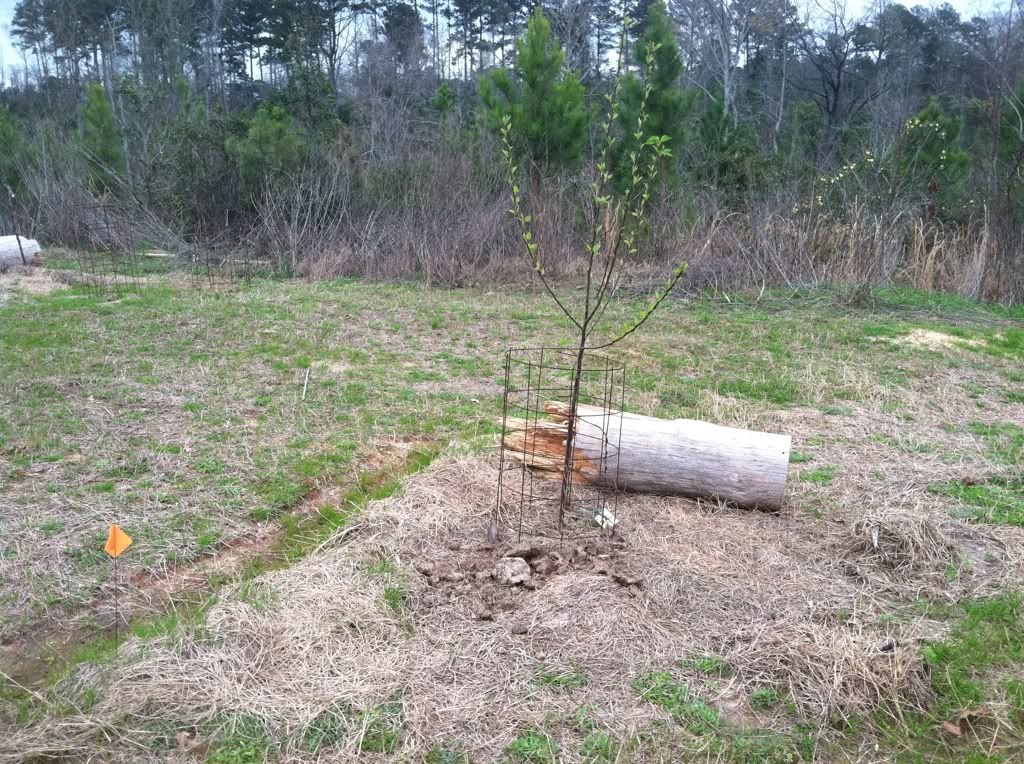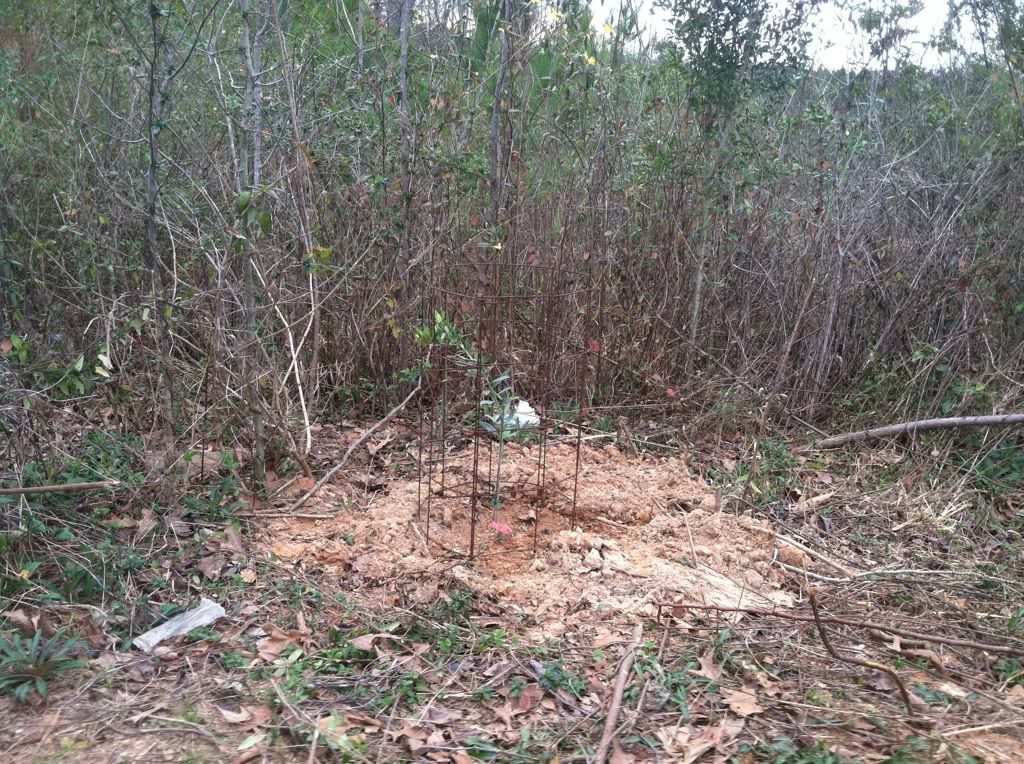Guy, I really enjoyed that article. The comments that follow are quire telling nes pa?
Matt, I'm following Martin Crawford's recommended guidelines for spacing in that the trees are spaced ~ 25' apart as opposed to the 20' normally recommended as the minimum distance. This will facilitate increased production within the below-canopy layers. Additionally, I am leaving a couple, contiguous spots open that a pure grid-layout would suggest should have trees. The purpose of doing so is to create flexibility for future placement of annuals, a sitting area . . . whatever. I am leaving the north and northwest aspects as vegetated as possible to act as a wind break. There is still some chainsaw work that needs to be done but that will wait until later when all realistic danger of a late frost has passed to give as much protection from as much as possible for as long as possible.
As for the actual technique of putting the trees into the ground, I tried to dig each hole three times larger than the root ball, amended heavily with some store-bought compost, oriented the tree as vertically as eyeballs would allow, partially backfilled the hole, watered heavily, filled the hole completely and watered heavily again. The dirt displaced by the addition of the compost was then used to berm the downhill side.

This first picture is of a pineapple pear just leafing out. There is a smallish swale on the uphill side, a U-shaped berm intersects the berm of the swale, the tree was caged with concrete re-enforcement wire, a nurse log was placed along-side, the whole swale and U-shaped berm were mulched heavily with old hay and topped with some cow manure.

This next picture is of an olive and represents the most westerly tree planted thus far. This is a good representation of how the thicket is being pushed back as trees are planted. Before the tree was put in place, the thicket extended well into the foreground of the picture. The downhill portion of the planting site has been bermed but no swale has yet been dug nor has mulch been placed (although it will before the day is out.)

This last picture is of a peach tree and one of only a very few where a tree ring has been used. The tree ring will ultimately be removed and replaced with an organic mulch. Here again you can see how the thicket is being pouched back as trees require planting sites. The view is to the northwest.


